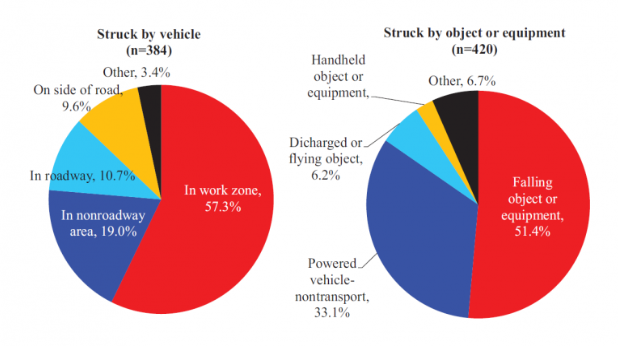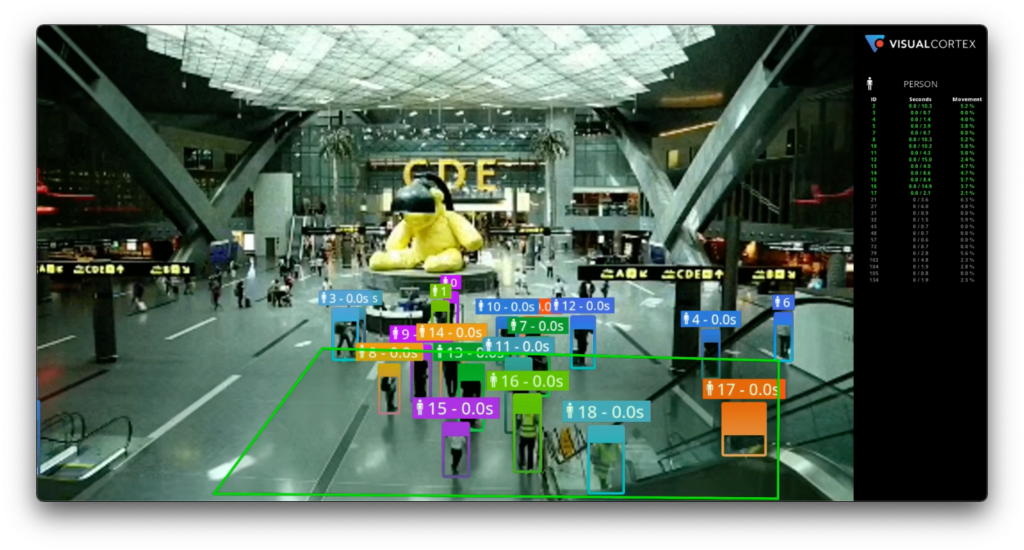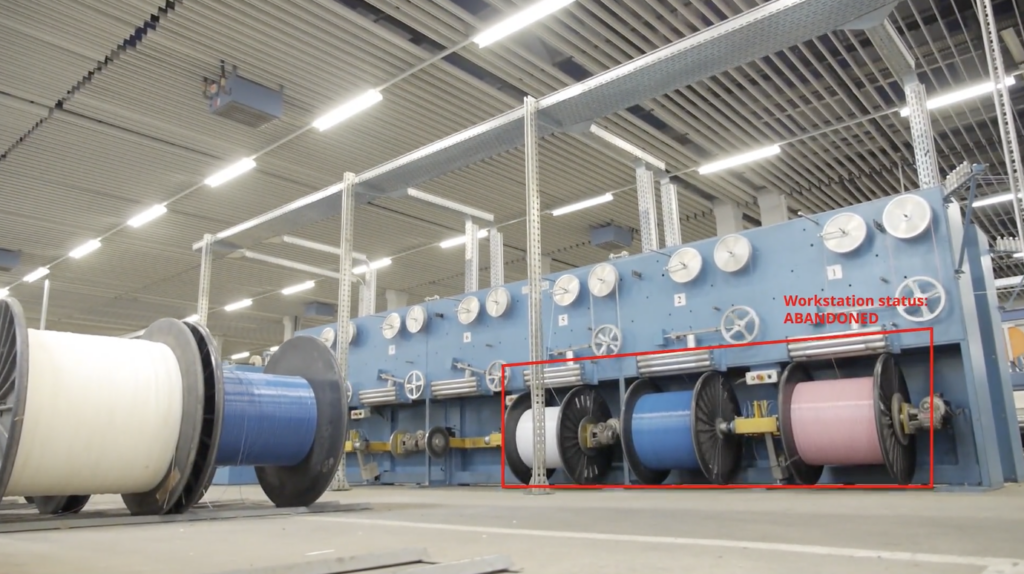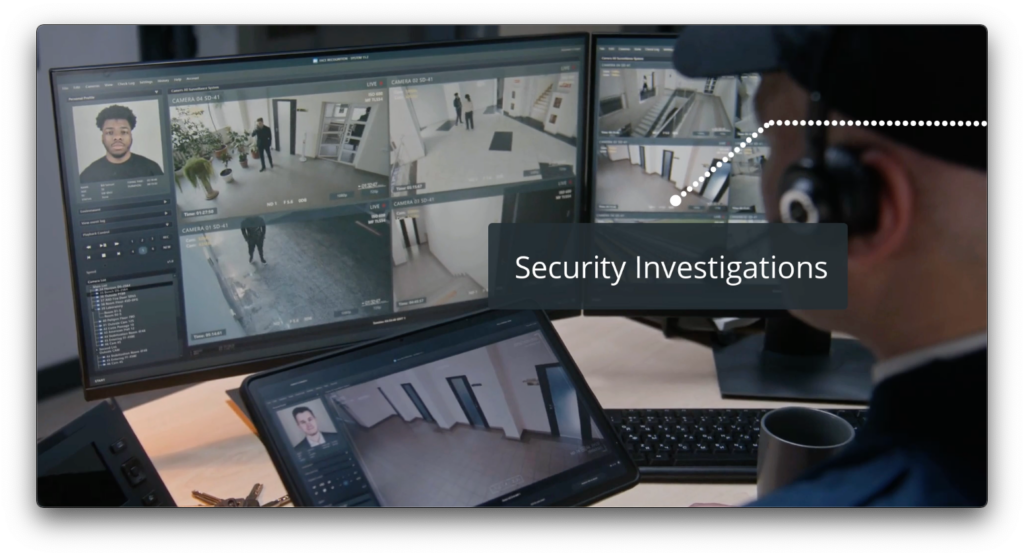OH&S video analytics for people counting
As adults, many of us spend most of our waking hours at work. So, ensuring we come home safe at the end of the day is serious business. Computer vision (or video analytics) – the ability to automatically detect defined objects and actions within video footage – has an important role to play in Occupational Health and Safety (OH&S).
Specifically, counting people with OH&S video analytics can help us create safer workplaces in a number of ways: From detecting incidents in order to prevent or contain accidents, reducing risk and increasing compliance; to facilitating better post-incident investigations and employee wellbeing.
To put the importance of enabling strong OH&S practices in economic terms, the International Labour Organization’s 2020 paper, Quick Guide on Sources and Uses of Statistics on Occupational Safety and Health, estimated poor OH&S practices cost “almost 4 per cent of global gross domestic product each year”. The human cost is far greater still, with over 2.78 million workers dying each year as a result of avoidable accidents or illness experienced in the workplace.
So, what are the key ways in which OH&S video analytics for people counting can improve workplace safety? Here’s our top 10:
Top 10 use cases: OH&S video analytics for people counting
1. Unsafe loitering:
Leverage dwell-time monitoring and motion analysis to detect loitering in restricted zones, such as near active machinery, loading docks, within clearways, or areas under load. Those in the construction and manufacturing industries need to be particularly vigilant of the latter.
In a 2020 article, Preventing Struck-by Injuries in Construction, the Centers for Disease Control and Prevention cited “struck-by injuries” as the “leading cause of nonfatal injuries and the second most common cause of fatalities among construction workers” in America. Struck-by injuries are defined as a worker being hit by a moving or falling object, including equipment and vehicles. In fact, the construction sector suffers the highest number of fatal stuck-by injuries of any job sector, with the risk of non-fatal struck-by injuries doubling that of all other industries combined.
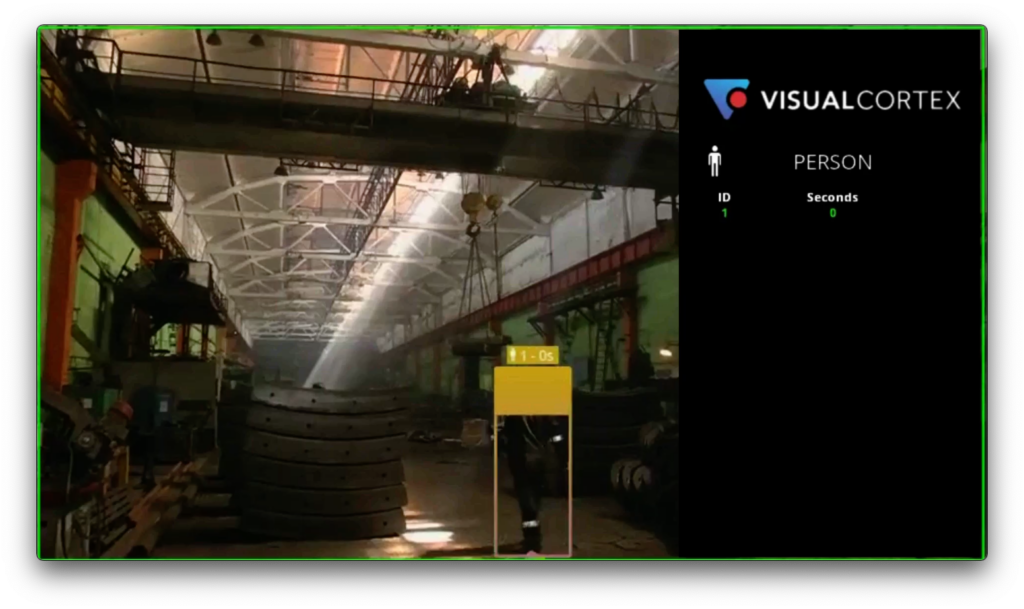
2. Zone monitoring and intrusion detection:
Track and control the number of individuals entering, exiting and moving within restricted zones. Ensure compliance with safety protocols and minimize the risk of accidents or exposure to hazards. For example, use line-crossing triggers to notify forklift operators if they stray into pedestrian zones (and vice versa). Or, detect and trigger warnings when people enter hazardous areas after-hours or without personal protective equipment.
3. Proximity alerts and near-miss detection:
As opposed to detecting people crossing lines – or entering zones – within a defined area, proximity alerts programmatically notify systems or individuals when a person gets too close to another defined object. Examples include worker proximity to one another (like multiple people working with chemicals in a pharmaceutical lab), dangerous processes (industrial metal smelting), and active machinery (such as cranes, forklifts or diggers).
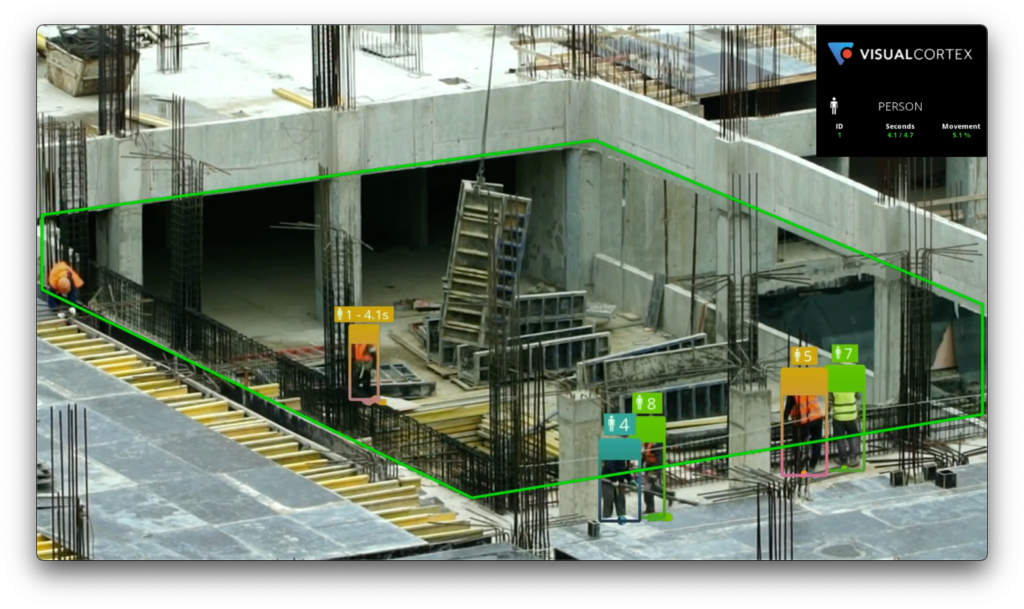
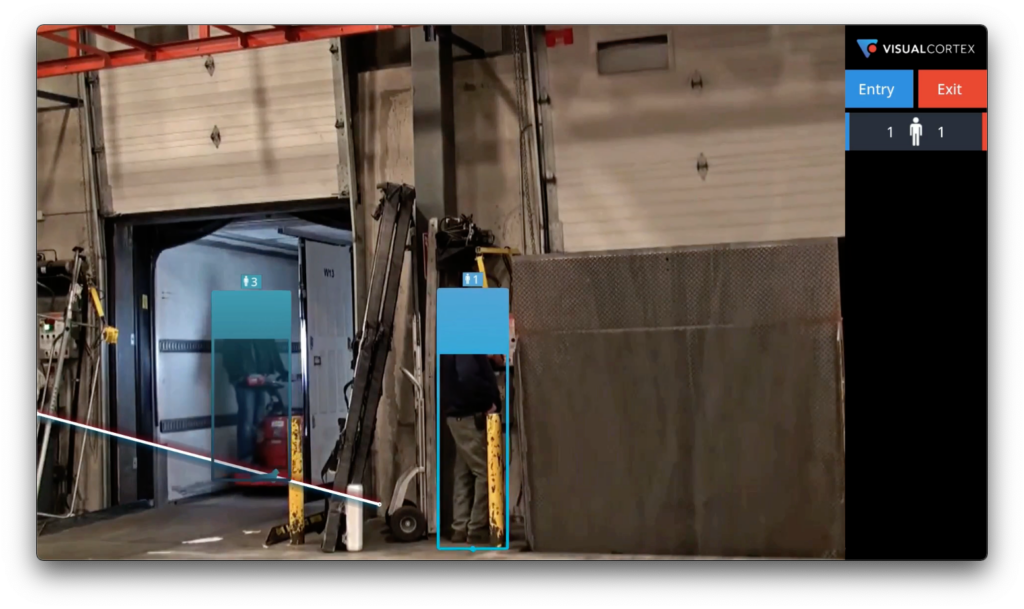
4. Safety breach detection:
While OH&S video analytics solutions can detect, count, track and analyze defined objects and actions, additional layers of logic can be applied to drive real-world outcomes and facilitate further analysis. For example, you might select a field-of-view to monitor. Within that view, you might run Machine Learning algorithms to detect people and forklifts that enter it. However, if a person and forklift are detected within that view at the same time, you might trigger a warning to notify the forklift operator that they’re in a pedestrian zone.
5. Usage monitoring to facilitate predictive maintenance:
Equipment failures and unscheduled repairs can be costly and dangerous. Using OH&S video analytics for people counting can generate up-to-the-minute usage data on a range of equipment and machinery. For example, airport video analytics tells you that a travelator can support a certain volume of commuter foot traffic, within a designated timeframe, before it requires maintenance. Programmatically counting those interactions with video analytics software enables you to schedule preventive maintenance once thresholds are hit (and before malfunctions occur).

6. Occupancy monitoring and crowd density analysis:
Many event spaces, buildings and work areas have occupancy limits within specific zones to help maintain safety and mitigate overcrowding. Music festivals need to avoid crowd crush situations, warehouses need to keep people and folk lifts at arms length, while manufacturing plants and construction sites need to mitigate the potential for accidents. Using OH&S video analytics for people counting, you can automatically and continuously monitor occupancy rates and crowd density in real-time. When people density or worker and patron numbers reach defined thresholds, directly trigger alerts to operational staff to help them take timely real-world action: Disperse crowds, improve the flow of foot traffic and prevent additional people from entering a site or venue until existing numbers subside.
7. Exception reporting:
OH&S video analytics for people counting can also programmatically detect abnormal activity, which may indicate unsafe conditions, behavior or injuries. For example, some manufacturing processes require constant supervision. Automatically identify abandoned workstations and instigate response procedures. Notify supervisors when people (or other objects) are obstructing clearways. Trigger alarms when unexpected motions or poses are detected, such as people running or lying on the ground (which may indicate injury from a fall). Or, automatically identify missing safety equipment, triggering corrective real-world actions in-the-moment and logging the breach to meet regulatory standards.
8. COVID-safe compliance monitoring:
Detect, track and count people as well as monitor crowd behavior in real-time. Notify third-party systems – or trigger alerts to individual smart devices – when social distancing, crowd density and occupancy regulations are breached. Incidents of close contact and high density can be aggregated over-time to reveal common inflection points, giving you the necessary insights to address those trends. Corrective actions may include redesigning workstations or floor plans to reduce bottlenecks. During times of heightened COVID restrictions, the time-stamped metadata created about defined incidents – such as occupancy or density thresholds being reached – also enables you to identify potential close contacts and aid contact tracing efforts.
9. Fast and thorough post-incident investigation:
The ability to rapidly identify and collate video metadata and clips containing incidents of interest – such as workplace accidents or safety breaches – enables subsequent investigations to be conducted quickly and meticulously. The ability to verify the nature of workplace OH&S events with time-stamped video evidence enables you to pinpoint underlying causes. See when new safety protocols may be required, have the material needed to conduct staff training, and reduce risk of liability, insurance premiums, and the manual resources required to monitor and address OH&S concerns.
10. Increase safety and compliance, reduce risk and liability in the long-term:
The ability to record, aggregate and visualize defined events over time allows OH&S professionals to unearth trends and insights about physical workplace interactions that cause or contribute to safety issues.
Track similar incidents and near-misses – such as personnel-machinery proximity breaches – to reveal identifiable patterns. Then, implement proactive measures – like adjusting safety protocols and facility layouts – to reduce the likelihood of future accidents or injury.
Understanding people-centric behavioral patterns – such as occupancy, traffic flow and congestion by location and time-of-day – can also underpin better emergency preparedness, including optimizing evacuation processes.
Track adherence to safety protocols over time – such as safety equipment usage, or supervision requirements – to demonstrate and improve compliance. And, proactively reduce risks by detecting potentially dangerous correlations (such as high-traffic areas within short-reach of potential safety hazards). Then, take mitigating action; from updating floorplans or layouts, to adding signage and installing safety barriers.
Even help improve resource allocation and employee wellbeing. Harness video analytics solutions for people counting to analyze and understand overall occupancy and space utilization trends, optimizing physical workspaces, staffing levels and work rosters accordingly.
OH&S video analytics for people counting: Where to next?
While there are millions of types of objects in the world, and almost as many potential ML Models to help detect them, we’re particularly passionate about people-centric computer vision solutions.
You can find some of our other content about people counting with computer vision here:

